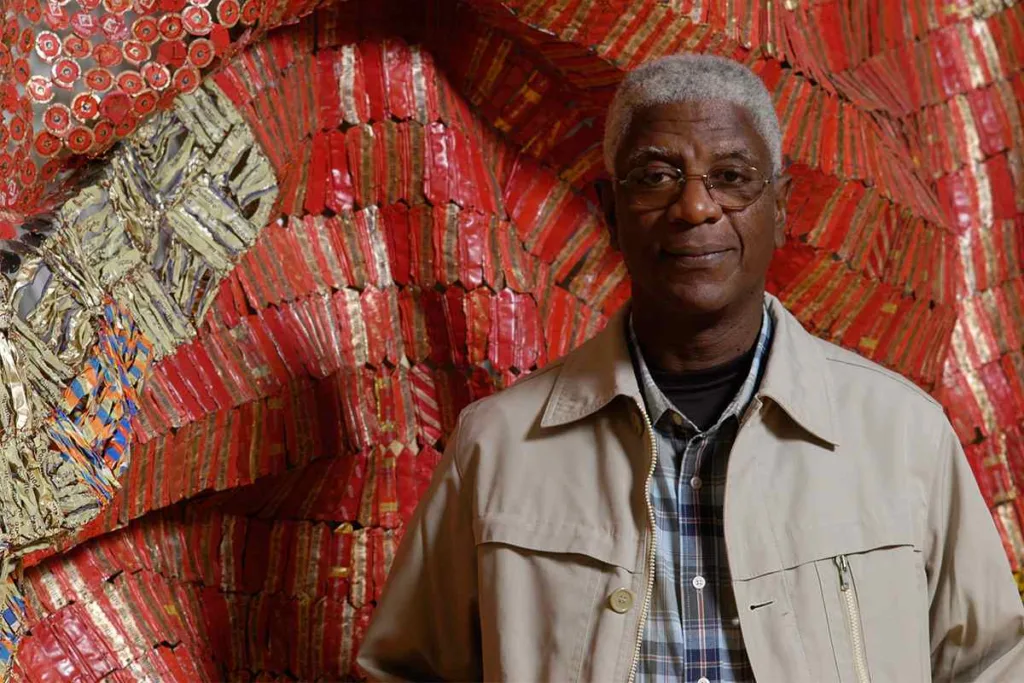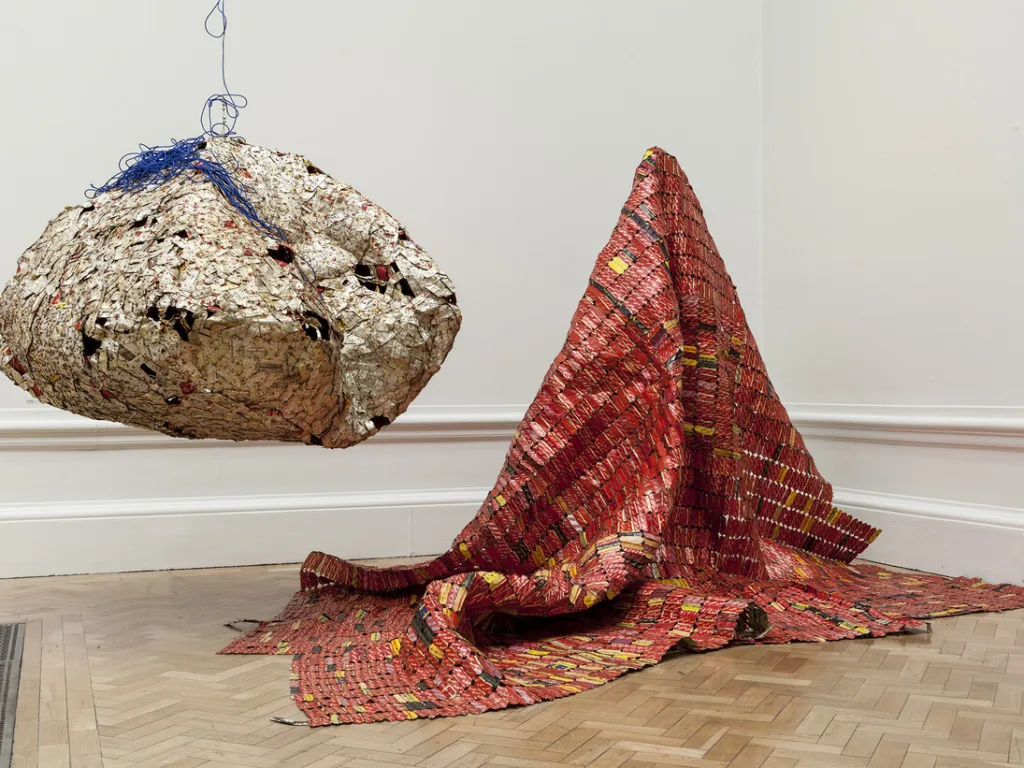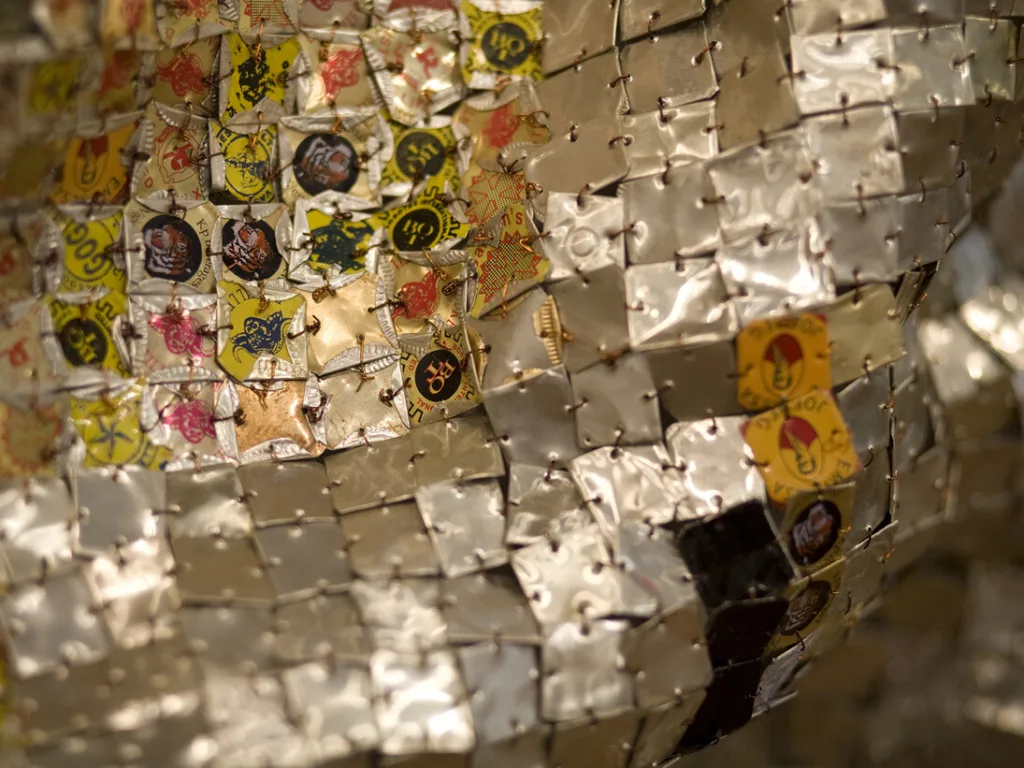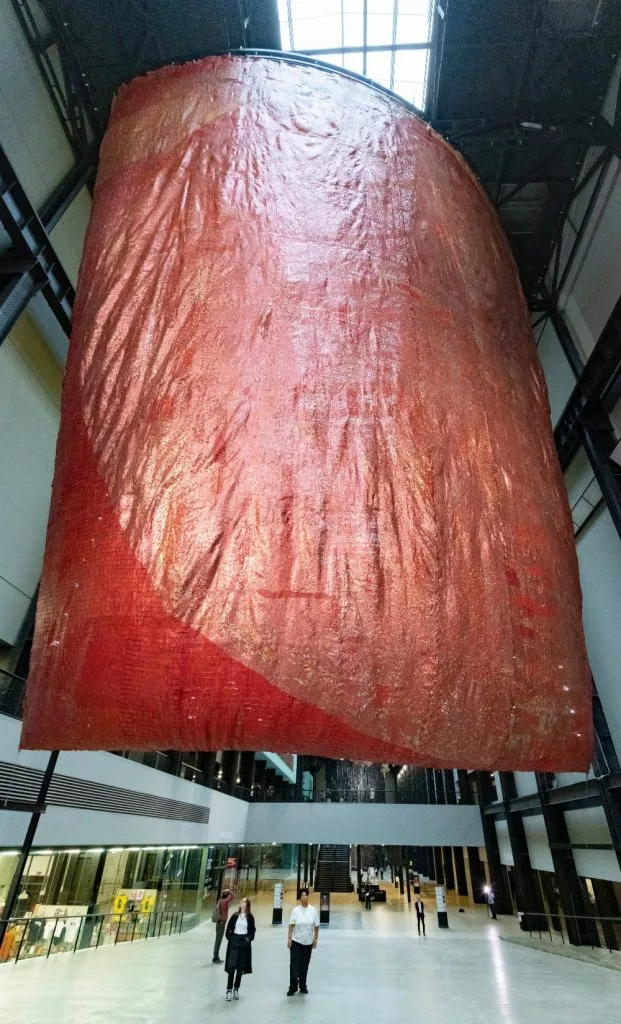A deep influence on African art is our long-held belief in eco-spirituality as a way of connecting with nature. For centuries, African artists have worked using natural materials that are mindful of nature. This practice has made African art a pioneer in sustainable art. Throughout generations, African traditions have emphasized being a part of nature’s solution and not its pollution. From clay sculptures to body painting, African art undoubtedly captures nature’s beauty while showcasing creativity rooted in the environment.

However, as our population grows and society advances, it’s crucial for our art to highlight the importance of environmental sustainability. Similarly, we need to recognize artists who have long championed sustainable practices. We begin by honouring the legendary El Anatsui, an inspiring global example for us all whose creations emphasize environmental awareness and sustainability.

El Anatsui is a well-known Ghanaian sculptor whose innovative fusion of traditional African creative techniques and contemporary art practices has earned international acclaim. His elaborate metal wall sculptures are crafted from abandoned materials like aluminum bottle caps, copper wire, and other recycled metal pieces. He’s famous for his metallic sculptures made from thousands of discarded bottle tops collected from local recycling centers, connected together with copper wire.

Born in 1944 in Anyako, Ghana, Anatsui spent most of his career as an artist and teacher in Nigeria. He earned his B.A. in 1969 from the College of Art at the University of Science and Technology in Kumasi, Ghana. He taught at the University of Nigeria, Nsukka, from 1975 until his retirement in 2011. Anatsui’s experimental approach to sculpture includes wood, ceramics, and found materials, in addition to the bottle-top works he’s been creating since the late 1990s.

In 2015, he received the Golden Lion for Lifetime Achievement, acknowledging his exceptional contributions to the art world. The curator of the 56th Venice Biennale Okwui Enwezor said:
El Anatsui is probably the most significant living African artist working on the continent today, and an artist who has contributed immensely to the recognition of contemporary African artists in the global arena.
He was awarded an honorary doctorate degree from Harvard University in 2016. He also became the first Ghanian to win the Praemium Imperiale in 2017.

His choice of materials further reflects his deep connection to his African heritage. Repurposing materials mirrors African tradition, where artists turn discarded items into functional and creative pieces. Anatsui’s approach critiques materialism and challenges our relationship with the environment.

Beyond his environmentally conscious methods, Anatsui’s sculptures also convey social and political statements about African history, culture, and identity. His work indeed challenges conventional concepts of African art, encouraging audiences to engage with modern African issues.

Anatsui’s sustainable art inspires artists and art lovers worldwide, obviously emphasizing the importance of environmental awareness and responsible artistic practices. In addition to creating magnificent artworks, he also advocates for a more thoughtful approach to art-making in the modern world.

His breathtaking site-specific installation, “Behind the Red Moon,” at Tate Modern in London, is the latest in a series of solo museum displays. Anatsui was named to the Time 100 list of the world’s most influential people in 2023.
Sustainable art uses advanced materials to particularly convey powerful messages on climate change, policy, and social issues. Through art, we can then foster a socially conscious culture that actively contributes to environmental sustainability.


